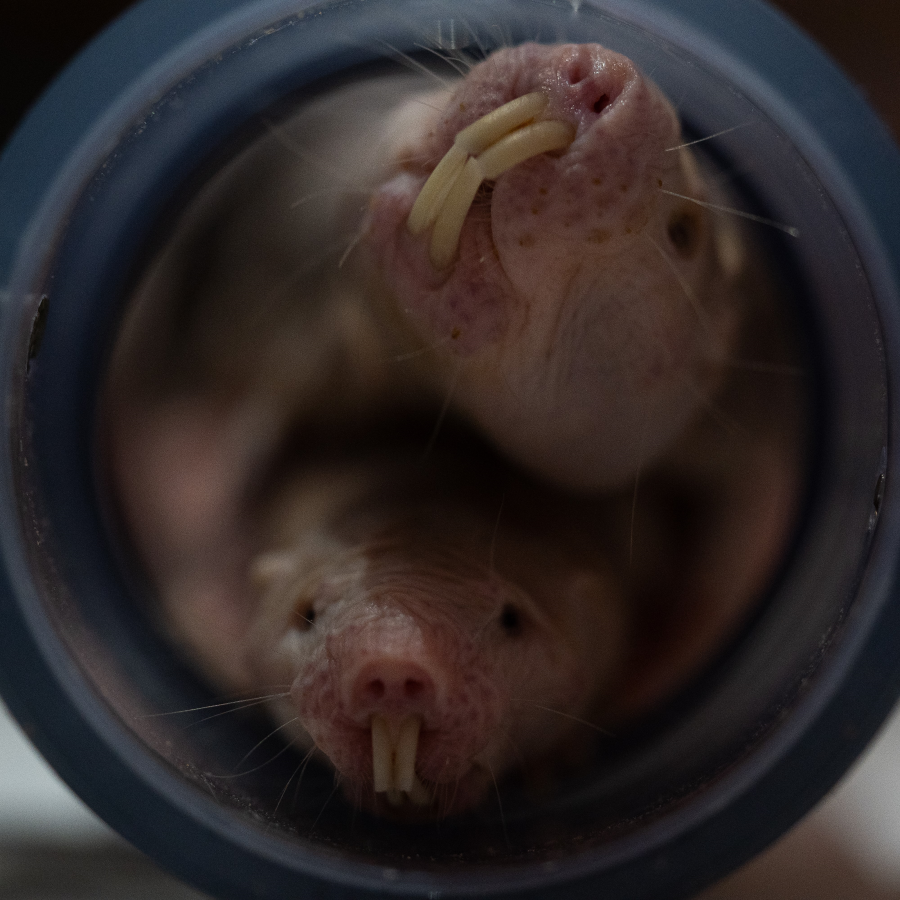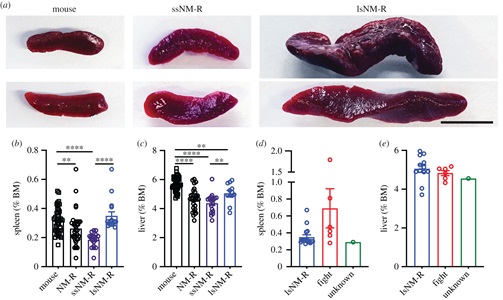New research reported in Open Biology investigates whether higher-ranking animals have better immunity than animals below them on the social hierarchy.

Naked mole-rats are full of surprises. Not only do they look strange, but they also have a strange lifestyle, too: they spend their entire lives underground. They also feel very little pain, rarely develop cancer and are exceptionally long-lived for a rodent (able to live over 30 years). The latest surprise in their tale was recently reported in Open Biology and highlighted that higher-ranked mole-rats likely have an immunological advantage over animals with lower social status. Lead author Professor Gary Lewin shares how he and his colleagues made their discovery.
Naked mole-rats are remarkable not only because they live ten times longer than most rodents. They live in strictly organised and multi-generational colonies, and each animal knows its rank and the tasks it has to perform. Due to their long life and unusual habitat as subterranean rodents, they have accumulated several unique features. For example, they have their own mechanisms to protect cells from becoming tumour cells and therefore show low cancer incidence.
Many age-related diseases typical of humans and other mammals are rare in naked mole-rats. Therefore, it can be assumed that their immune system has acquired some important differences. In my lab, and working with colleagues at the German Cancer Research Center (DKFZ), Freie Universität Berlin and the University of Pretoria, we focused attention on the mole-rats’ behaviours such as poor wound healing and high infection after fighting. Additionally, we have known that naked mole-rats cannot cope with some less pathogenic viruses, such as herpes. We decided to investigate the spleen, which plays a key role in the immune system and is involved in the formation, maturation and retention of immune cells. It turns out that they have a very short immunological memory, and due to this they retain more naïve lymphocytes, ready to develop an immune response to a new infection.
Dr. Valérie Bégay and Dr. Alison Barker initially observed that some of the animals had a much larger spleen than others which is usually an indication of sickness because the organ swells up when the body fights inflammation and disease, as many types of immune cells are manufactured and stored there. But after they couldn't find any evidence of disease, they sought another explanation for the enlarged spleen. Through previous behavioural research experiments on social ranking, we found out that spleen size is linked to the animal's social status. We learned that the higher-ranked animals had enlarged spleens and Dr. Bégay began to study the organs at the molecular level and used RNA sequencing and tissue sample analysis to classify the different immune cells in the spleen. This showed that the number of macrophages, which act as the body's defenders, is increased in the enlarged organs. This explained that the enlarged spleen might enable the higher-ranked animals to fight infections better and deal with inflammation and injury more easily.

Social hierarchies have been previously shown to influence the immune cell repertoire and functions in rhesus macaques and humans, so isn’t unique to naked mole-rats. What really surprised us is that there could be such large differences in spleen size without disease being present. The rank of a naked mole-rat depends on how it behaves in the group, and the size of the spleen is linked in turn to rank. This would ultimately mean that behaviour directly affects the physical characteristics of the immune system, or vice versa.
We also proposed that the spleen influences an animal's longevity. Naked mole-rats are eusocial mammals that live in large colonies (on average 40–70 individuals), dominated by the queen. The queen does not typically die of old age (but is usually killed during a "coup" - namely, when another female gathers male followers around her and removes the old queen) and up until her last day is fertile, which suggests at the very least that a strong immune system slows down the aging process.
This work opens many more questions around immune competence influenced by social status. For instance, which comes first: the larger spleen or the higher rank? This has not yet been determined. We also hope to gain new insights into cancer as naked mole-rats have a very efficient defense system against the disease. Whether the spleen plays a role in this remains to be seen and will involve further cell analysis.
What was your experience publishing with Open Biology?
We are very pleased with our publishing experience in Open Biology following an invitation from their Preprint Editorial Team. The process was easy and well managed.
Do you have an exciting new discovery that you would like to publish in Open Biology? Find out more about our author benefits and submission process.
----------------------------------------------------------------
Image 1: Naked mole-rats are subterranean rodents with a hierarchical social structure. Credit: Gary Lewin, Max Delbrück Center for Molecular Medicine in the Helmholtz Association (MDC)
Image 2: Variable spleen size in naked mole rats compared to mouse spleens (DOI:10.1098/rsob.210292)




